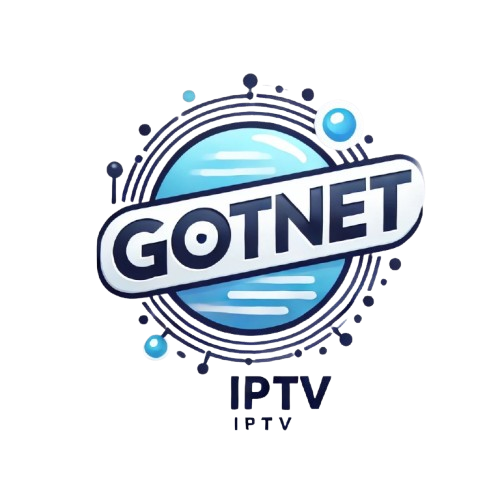GotNET
Understanding IPTV: How Internet Protocol Television Functions
In the ever-evolving landscape of media consumption, Internet Protocol Television (IPTV) has emerged as a revolutionary method of delivering television content over the internet. Unlike traditional cable or satellite television, IPTV uses internet-based protocols to transmit live broadcasts, video on demand, and other multimedia content. This article aims to provide a comprehensive understanding of IPTV, including its differences from conventional TV, the underlying technology that powers it, and the benefits and challenges faced by viewers today.
What is IPTV and How Does it Differ from Traditional TV?
IPTV, or Internet Protocol Television, refers to the delivery of television content using internet protocol networks, primarily the Internet. This technology allows users to stream video content directly to their devices, enabling them to watch their favorite shows, movies, and live broadcasts on-demand. Unlike traditional television, which relies on cable or satellite signals transmitted through physical infrastructure, IPTV operates through broadband connections, offering a more flexible and personalized viewing experience.
The primary distinction between IPTV and traditional TV lies in the way content is delivered and consumed. Traditional TV typically involves broadcasting signals to a wide audience, which limits viewer choices to scheduled programming. In contrast, IPTV empowers users to choose what and when they want to watch, effectively transforming the viewing experience into one that is interactive and tailored to individual preferences. This shift also means that IPTV services often include features such as catch-up TV, video on demand, and the ability to watch content on multiple devices, enhancing the overall user experience.
Moreover, IPTV can be categorized into several types, including live IPTV, time-shifted IPTV, and on-demand IPTV. Live IPTV delivers real-time programming, similar to traditional broadcasting, while time-shifted IPTV allows users to access previously aired content at their convenience. On-demand IPTV offers a library of titles from which viewers can choose what to watch at any time. This segmentation further illustrates how IPTV differs from traditional television, which typically offers a more rigid programming schedule.
The Technology Behind IPTV: Protocols and Streaming Methods
At the core of IPTV technology are various protocols and streaming methods that facilitate the transmission of video content over the internet. One of the most widely used protocols is the Internet Group Management Protocol (IGMP), which enables the efficient distribution of multicast streams, allowing multiple users to access the same content simultaneously. This multicast capability is essential for live broadcasts, as it significantly reduces the bandwidth required for streaming to multiple viewers at once.
Another crucial aspect of IPTV is the use of adaptive bitrate streaming, which dynamically adjusts the quality of the video stream based on the viewer’s internet connection. This technology ensures a smooth viewing experience, minimizing buffering and interruptions. By employing codecs such as H.264 or HEVC, IPTV platforms can deliver high-quality video with reduced bandwidth requirements, making it accessible even to users with slower connections.
IPTV services rely on content delivery networks (CDNs) to distribute video content efficiently across the globe. CDNs are a network of servers strategically placed to cache and deliver content closer to the end-user, reducing latency and improving load times. This infrastructure not only enhances the performance of IPTV services but also allows providers to scale their offerings easily, accommodating a growing number of users without compromising on quality.
Benefits and Challenges of Using IPTV for Viewers Today
One of the most significant benefits of IPTV for viewers is the vast array of content available at their fingertips. With access to thousands of channels, movies, and on-demand shows, users can curate their viewing experiences to match their preferences. Additionally, many IPTV services offer features such as cloud DVR, which allows users to record and store their favorite programs for later viewing, adding even more convenience to the experience.
Another advantage of IPTV is the flexibility it offers in terms of device compatibility. Viewers can access their favorite content on various devices, including smart TVs, smartphones, tablets, and computers. This multi-device functionality enables users to watch their programs anywhere and anytime, making it a popular choice for those with busy lifestyles who desire on-the-go entertainment.
However, IPTV does come with its challenges. A significant concern for many users is the reliability of their internet connection. Unlike traditional TV, which operates independently of internet speed, IPTV requires a stable and high-speed connection to deliver quality content. Users may experience buffering or degraded video quality if their internet service is inconsistent. Additionally, the legality of certain IPTV services can be questionable, as some may offer unauthorized access to copyrighted content, posing potential risks for users in terms of legal repercussions and service reliability.
In summary, IPTV represents a significant advancement in how television content is delivered and consumed. By leveraging internet protocols, it provides viewers with unprecedented flexibility, a wealth of content options, and the ability to customize their viewing experience. While the technology behind IPTV continues to evolve and expand, so too do the challenges it presents, particularly regarding internet reliability and legal concerns. As consumers increasingly embrace this innovative medium, understanding its nuances will be essential for making informed choices about their entertainment options.
